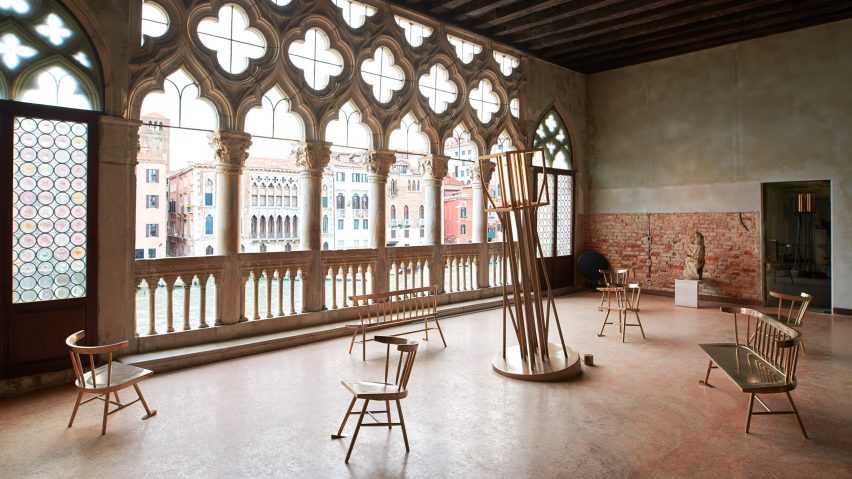
Virgil Abloh presents sinking furniture at Carpenters Workshop Gallery show in Venice
Fashion designer Virgil Abloh addresses the issue of rising sea-levels in an installation of sinking furniture on show during this year's Venice Art Biennale.
Abloh is just one of 23 designers and artists featured in the Dysfunctional exhibition of more than 50 works, which is being held by the Carpenters Workshop Gallery (CWG) for the 58th edition of the Venice Art Biennale.
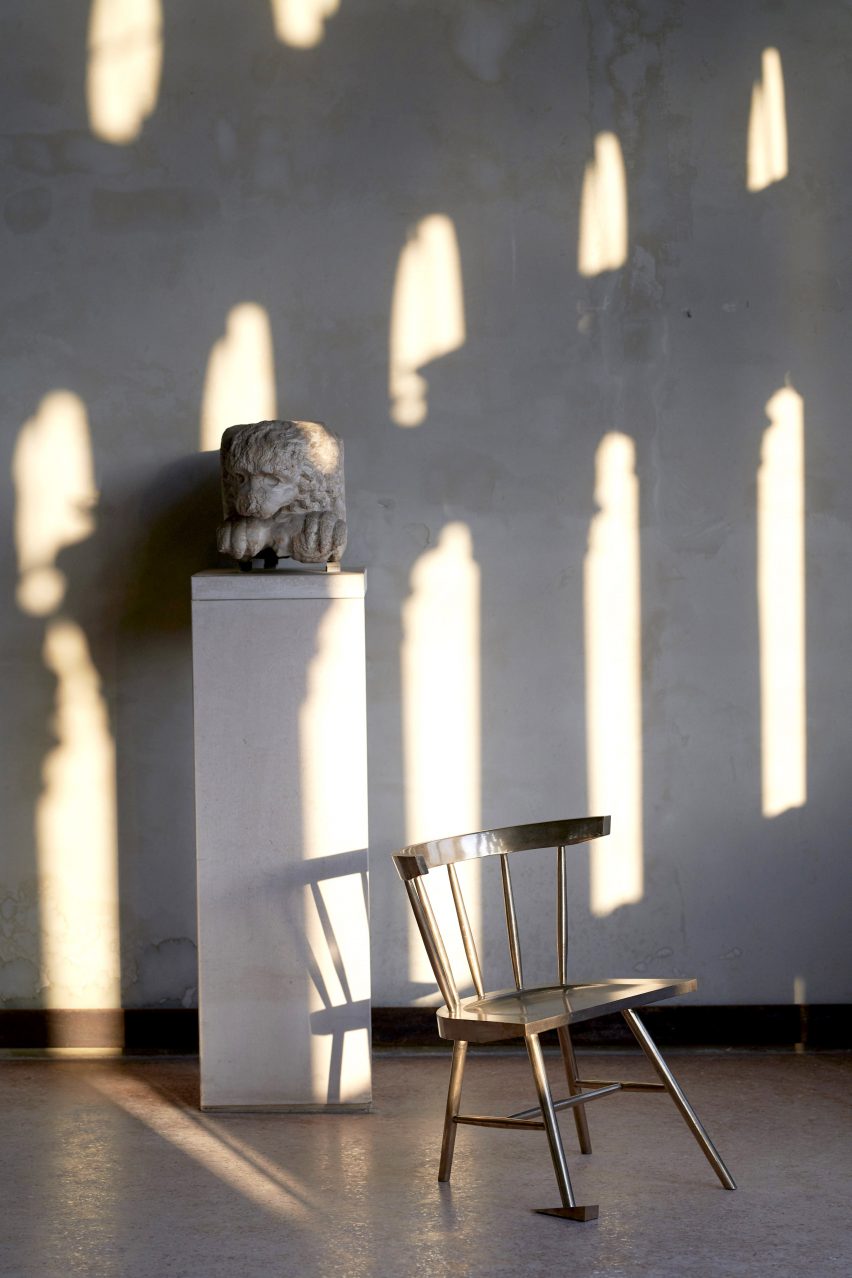
Other exhibitors include Dutch designer Maarten Baas, the Campana Brothers, and French designer Mathieu Lehanneur.
Each of the 50 collectible design pieces are set against the lavish backdrop of the Galleria Giorgio Franchetti alla Ca' d'Oro's gothic architecture and its renaissance and baroque art collection.
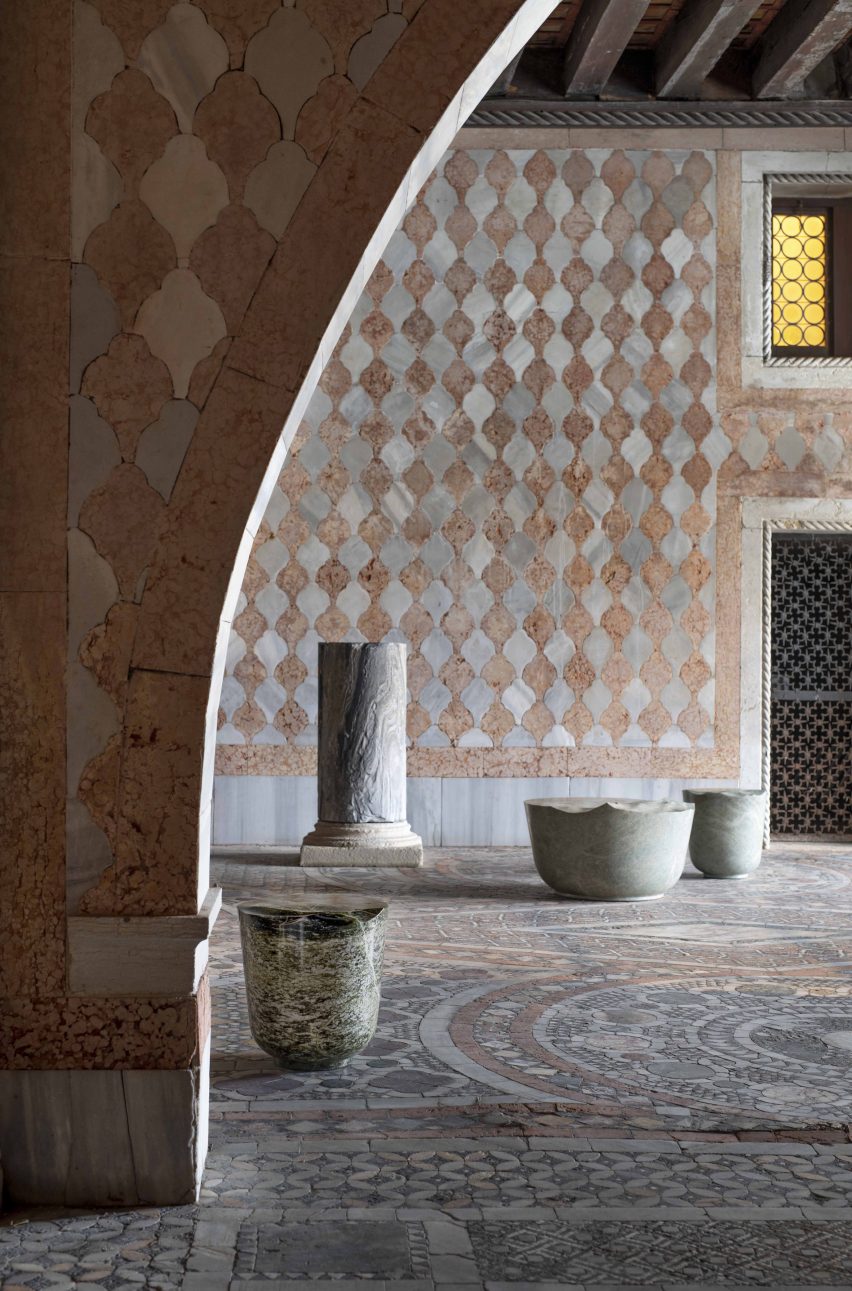
For his pieces, called Alaska, Abloh dissected a series of furniture items at different points to appear as if they are sinking into the floor.
They are on display as part of the Acqua Alta installation within the wider exhibition. The installation takes its name from the natural phenomenon of the tide peaks that regularly affect Venetian life, causing the city to partially flood.
Abloh aims to encourage viewers to think about the issue of rising sea-levels, both in terms of the fate of Venice and the effect of climate change on the planet.
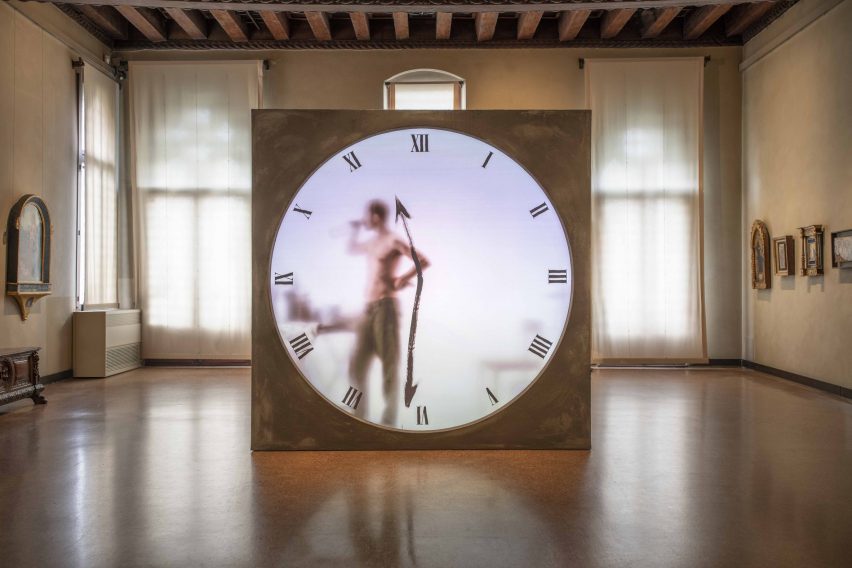
Set at a slant, the furniture pieces are not entirely functional, but instead work to blur the line between art and design.
"We decided to stage Dysfunctional during the world's most important art exhibition, the Venice Art Biennale, to question what defines an artwork – why can artworks not be functional and when does design become art?" said CWG co-founders, Julien Lombrail and Loic Le Gaillard.
"The idea of dysfunction, defined as 'the disruption of normal social relations', invites visitors to rethink the conventional relationship between form and function, art and design, the historical and the modern," they continued.
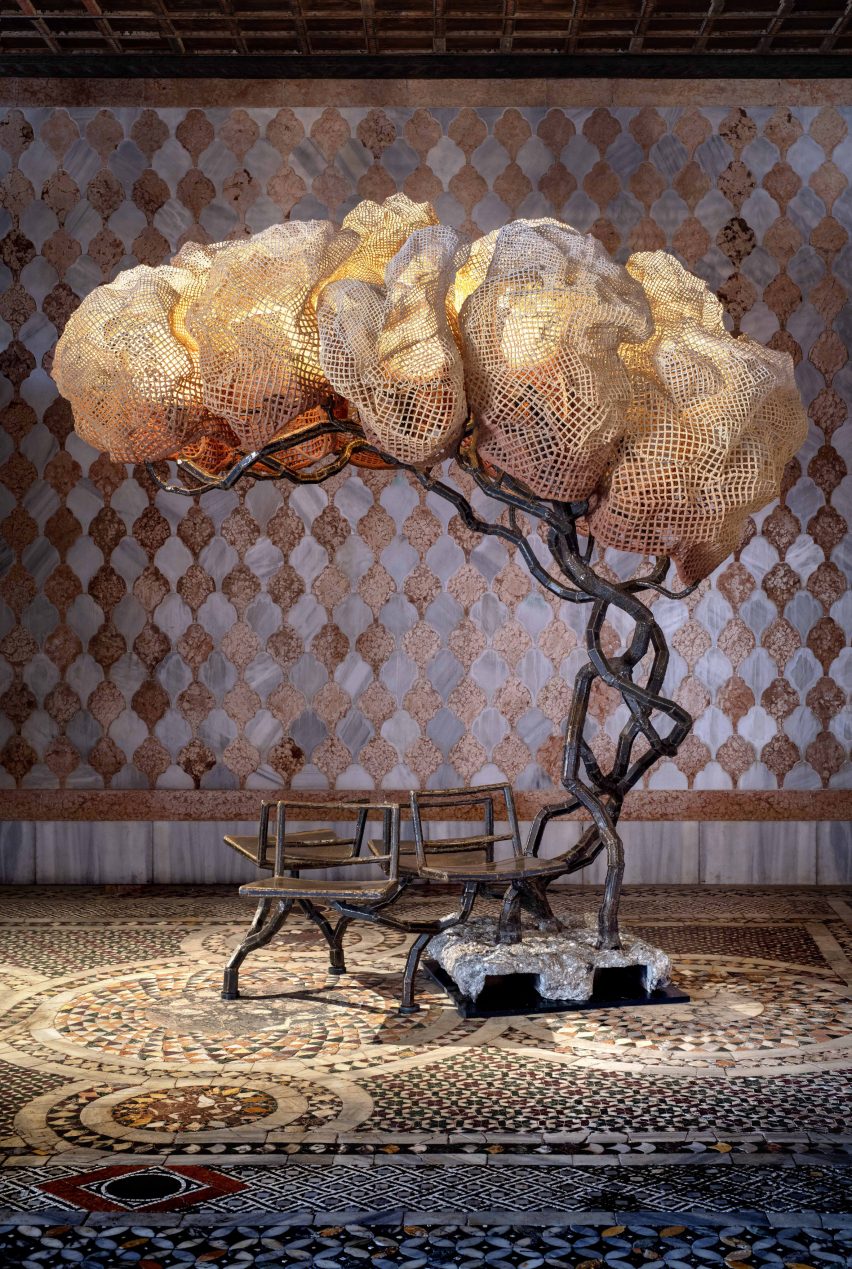
French designer Mathieu Lehanneur also contributed to the Acqua Alta installation with a series of green marble and granite sculptures called Ocean Memories, which feature undulating surfaces that echo the waves of a nearby lagoon.
Baas has also created a self-portrait for the exhibition called Real Time, which depicts a blurry portrait of the artist behind a large clock face.
Made 500 years after the death of Leonardo da Vinci, the artwork references the famous Vitruvian Man, as well as addressing different aspects of passing time such as getting older, moving forward and looking back.
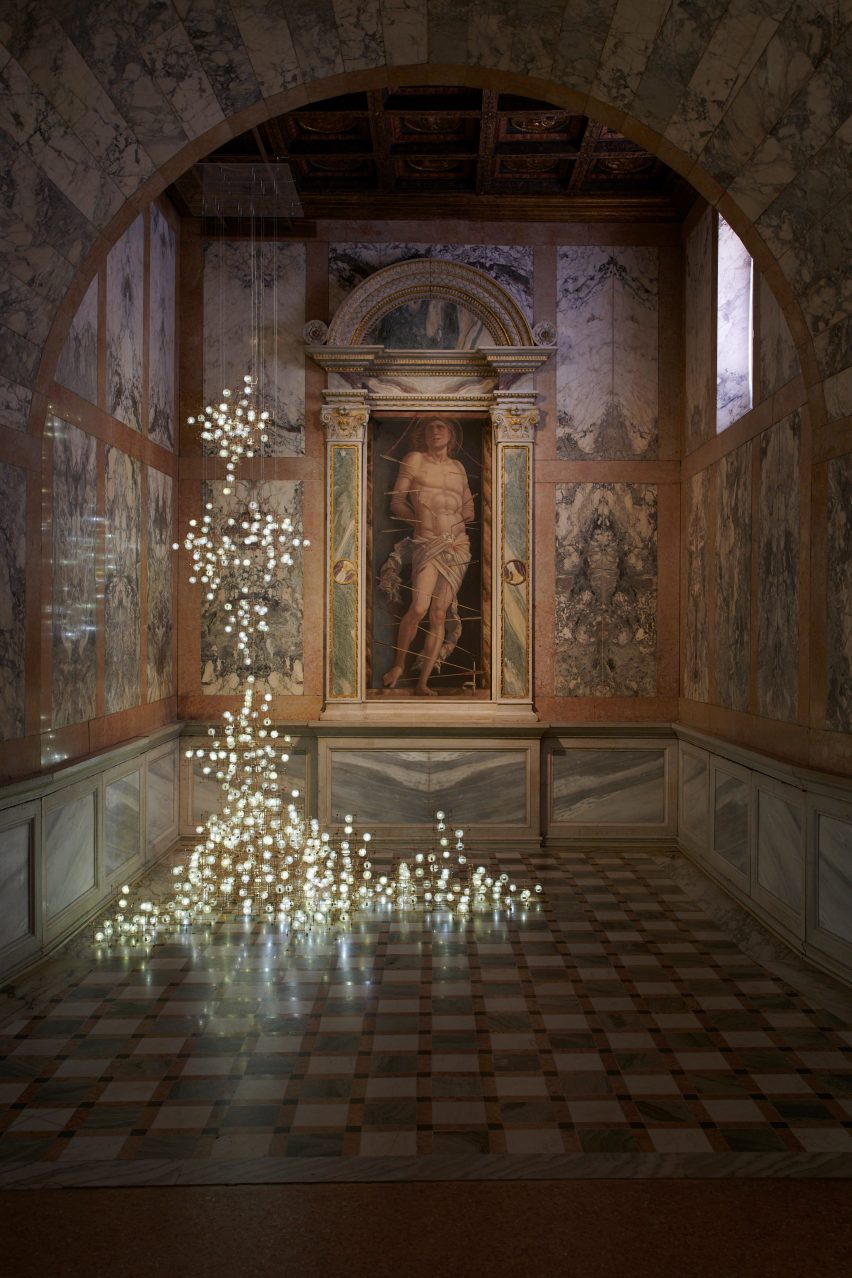
A glowing tree-like installation by Nacho Carbonell sits in the centre of the 15th-century Ca' d'Oro courtyard, where visitors can walk through a "forest of light" comprised of the Spanish designer's golden lights wrapped in perforated metal gauze to create a shimmering effect.
Elsewhere in the three-storey palazzo, Amsterdam designers Studio Drift have installed their Fragile Future chandelier – an installation constructed from delicate dandelion seeds and LEDs.
The installation, which forms a frame of light around Andrea Mantegna's 16th-century painting of San Sebastian, intends to invite the viewer to rethink their connection with nature.
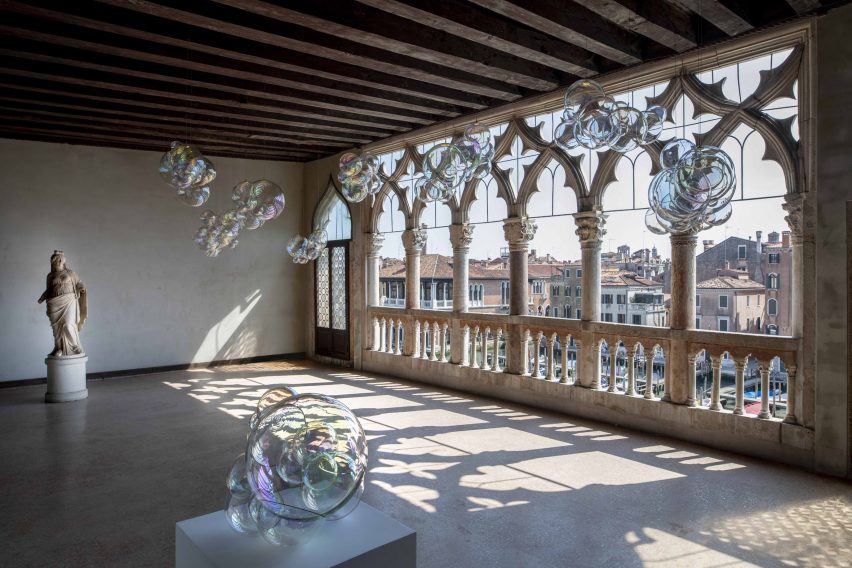
The Dysfunctional exhibition, which opened at the beginning of May, will be on show until the end of the biennale on 24 November 2019.
Also on show during the biennale is the Ghana pavilion designed by architect David Adjaye. Modelled on traditional Gurunsi earth houses, the pavilion comprises a series of interconnected oval-shaped galleries topped by a wooden roof.